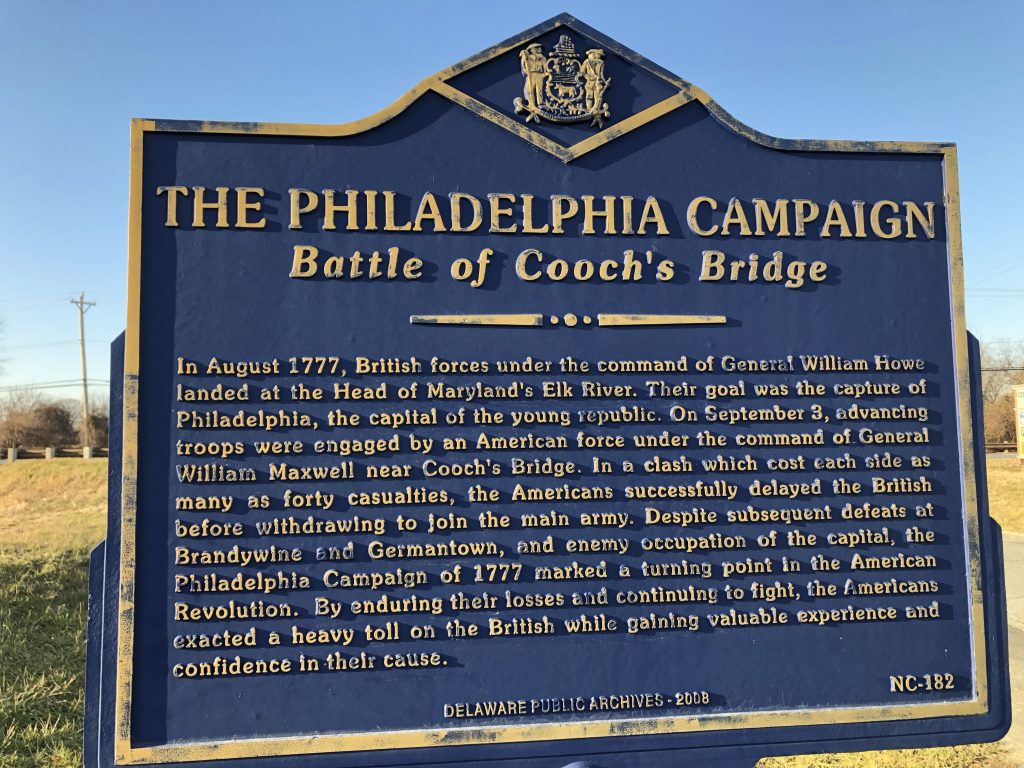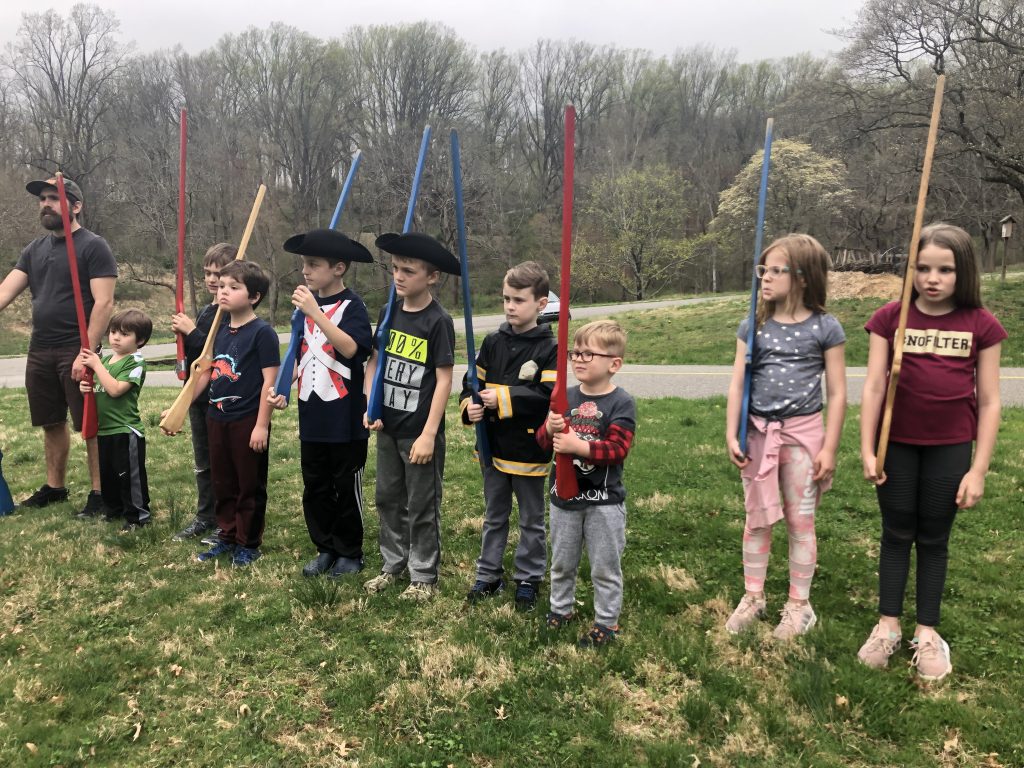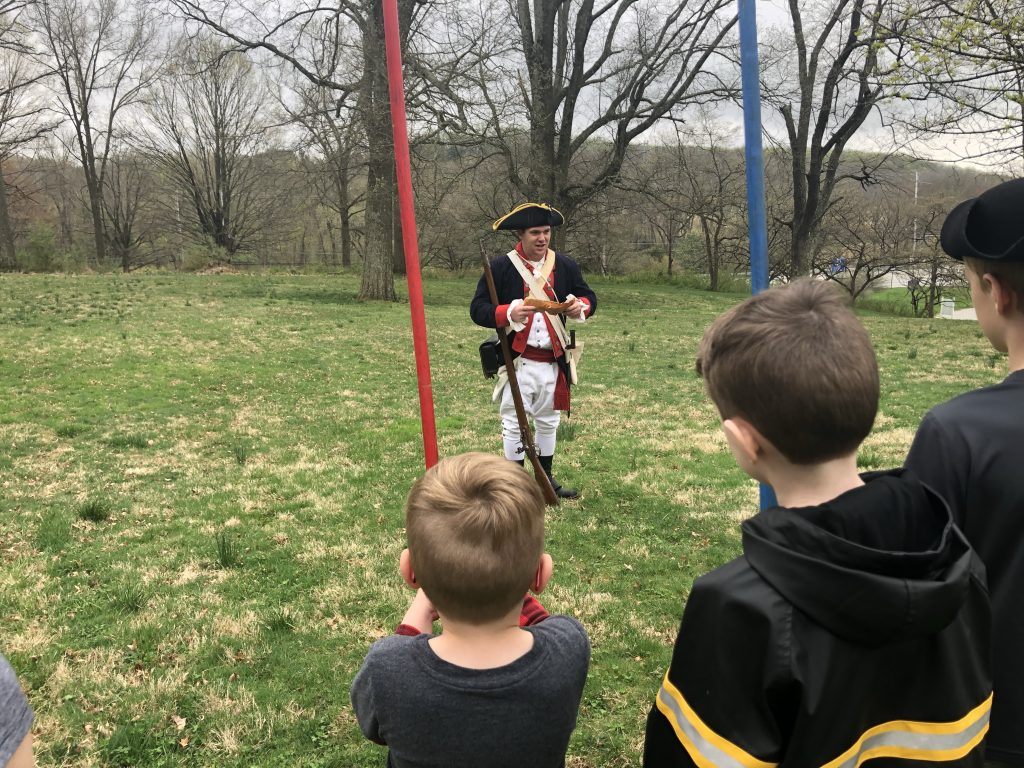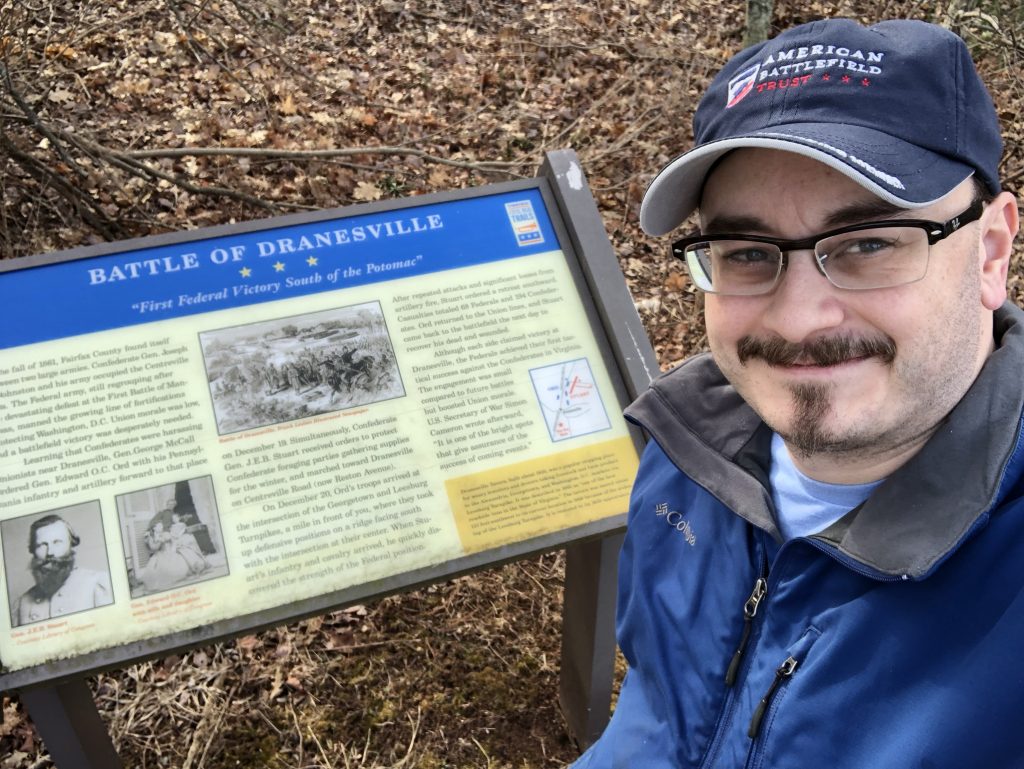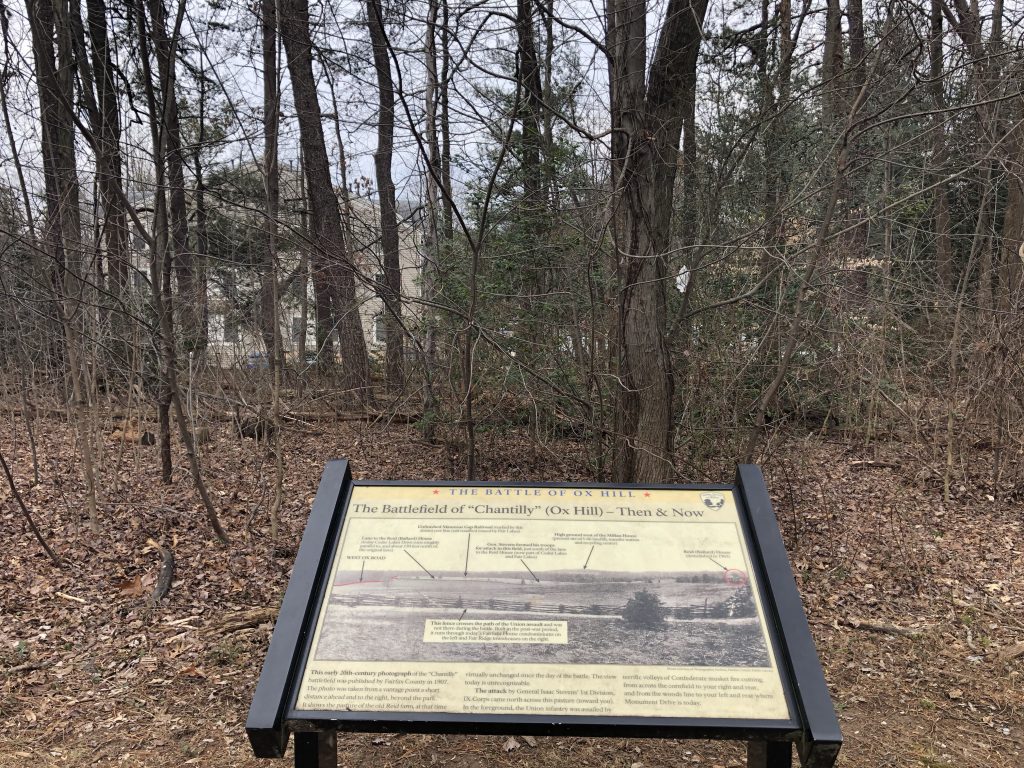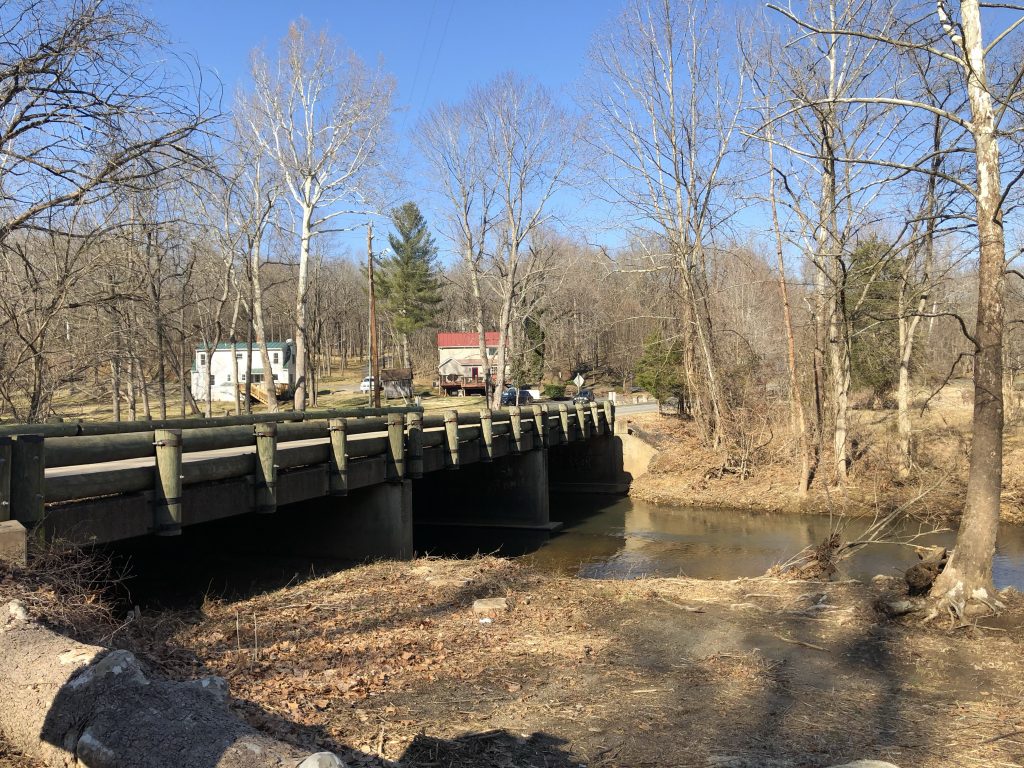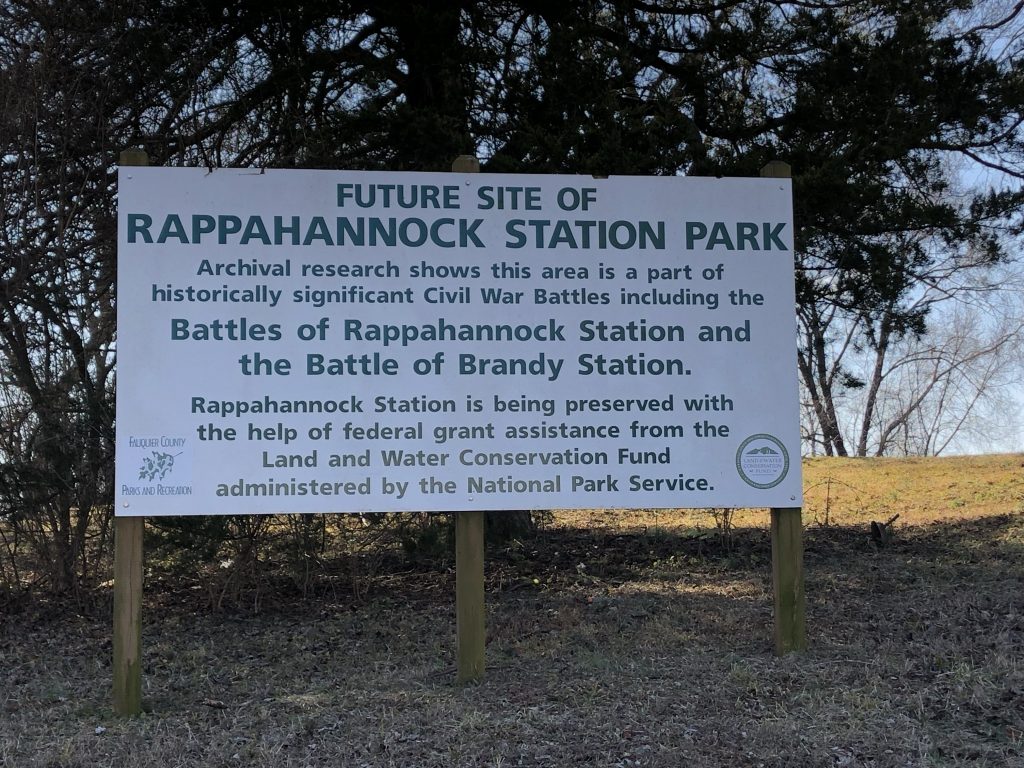Battlefield Visits: Finishing Off West Virginia (and then some)
In April of 2019, I did something that I had never done before: I planned a multi-day battlefield stomping tour of West Virginia, southwestern Virginia, and eastern Tennessee that would take me to some of the most remote places I had visited on my own. It was scary and exciting all at the same time. I spent weeks studying Google Maps and laying out the perfect route. I booked hotel rooms. Finally, after work on the Wednesday before Easter, I started the journey west.
My plan was to be checked in to the Wingate in Bridgeport, WV that night, but I had a stop that I wanted to make along the way.
Battle of Moorefield – Civil War Battlefield #83
Deviating from my route a bit, I turned north on US Route 220, and found a wayside marker for the Battle of Moorefield. This cavalry fight took place in the gorgeous mountain valley here, and the rolling terrain would have made for some seemingly good defensive positions. The action flowed south toward the town from this spot, but I’m glad that I took the time to take in this picturesque view.
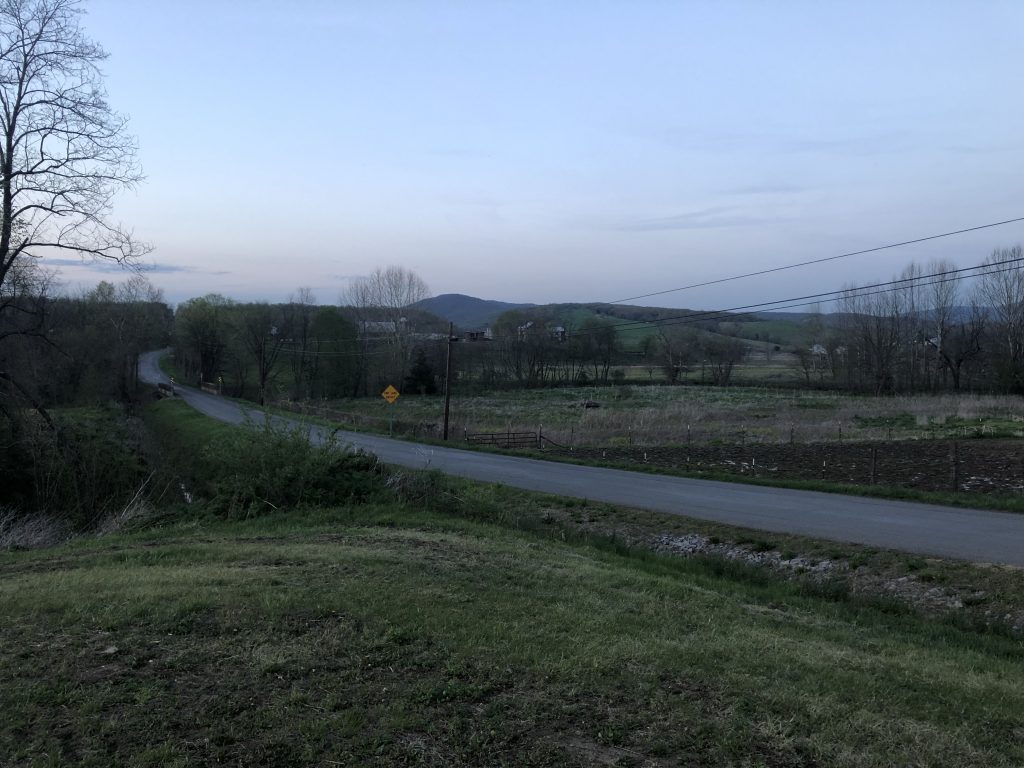
Day 1
After a good night’s rest, I woke up early, grabbed some breakfast in the hotel lobby, and hit the road for a great day of exploring. I knew this day would be the trickiest of the trip, as several of the stops that I had planned were up in the mountains, in the middle of the National Radio Quiet Zone (NRQZ) – where my cell phone would definitely not work. If I ran into some kind of problem, I’d have a hard time getting help.
Battle of Philippi – Civil War Battlefield #84
Appropriately, my day started at the first land battle of the Civil War – no, it wasn’t Manassas – it was the Battle of Philippi. There is a nice park along the Tygart Valley River here with flags, markers, and monuments – some of which aren’t Civil War-related. There is also a covered bridge here, which factored in the battle, although it has clearly been modified to handle modern automotive traffic.

Battle of Rich Mountain – Civil War Battlefield #85
I took a bit of a winding route from Philippi so that I could approach Rich Mountain from the west, much like the Union army did during the battle. My understanding is that this road – which follows the original trace of the Staunton-Parkersburg Turnpike – has since been paved, but at the time I visited, it was gravel all the way up to the summit. Once I was at the top, the first thing I noticed was how serene it was. Speaking as someone who has lived in suburbs all his life, it is shockingly quiet in the mountains of West Virginia.
There is something of a joke among Civil War nerds that a common question that tourists ask is something like this: “If a battle happened here, why aren’t there any bullet holes in the monuments?” (The second question is “Why do these battles always happen in National Parks?”) Well, I can tell you, at Rich Mountain nearly every marker has bullet damage in it (though I doubt it was caused in the 19th century). To be honest, I got a little nervous reading these tablets that had clearly taken rounds fired from behind where I was standing.

There is a local preservation group that seems to spearhead the acquisition and care of the battlefield land, but they have their work cut out for them given the state of the signs and markers when I visited. The American Battlefield Trust has also helped with securing land at the site.
Even with the rough condition, there are adequate waysides at the top of the mountain to understand what happened during the battle. Most notably, this is the battle that (rightly or wrongly) gave George McClellan the chance to make a name for himself, and basically catapulted him into the command of the Union army. I’d argue that William Rosecrans was actually the critical personality at this battle. Definitely worthy of a visit – this one is a hidden gem of the Civil War.
Battle of Cheat Mountain – Civil War Battlefield #86
A short drive to the southeast from Rich Mountain put me inside the NRQZ. My cell phone would be without a signal for the next 4 hours as I drove up and down the mountains.
My next stop was the Battle of Cheat Mountain, now contained within Monongahela National Forest. There was a short drive up a gravel mountain road right off of US Route 250, approaching the site of Cheat Summit Fort (also known as Fort Milroy) from the east. Even though there were 20th century strip mining operations in the area, the terrain immediately around the fort is still pretty well-preserved, and it is another amazingly quiet spot. There is an observation platform near the middle of the fort, and even some preserved earthworks. Plenty of waysides and markers tell the story. From the sound of things, this was an extremely remote and miserable place to be for the Union soldiers in the early days of the Civil War, with snowfalls occurring even in August.
Battle of Greenbrier River – Civil War Battlefield #87
Down in the valley to the east of Cheat Mountain, is the modern day town of Bartow, WV, site of the Battle of Greenbrier River in the fall of 1861. The US Forest Service ranger station on the east side of the town has a small museum with information about the local wildlife as well as some historical displays about the Battle of Greenbrier River, as well as the Battles of Cheat Mountain and Camp Allegheny, including a few artifacts. Outside, a wayside marker describes some cavalry action that took place in the area later in the war.
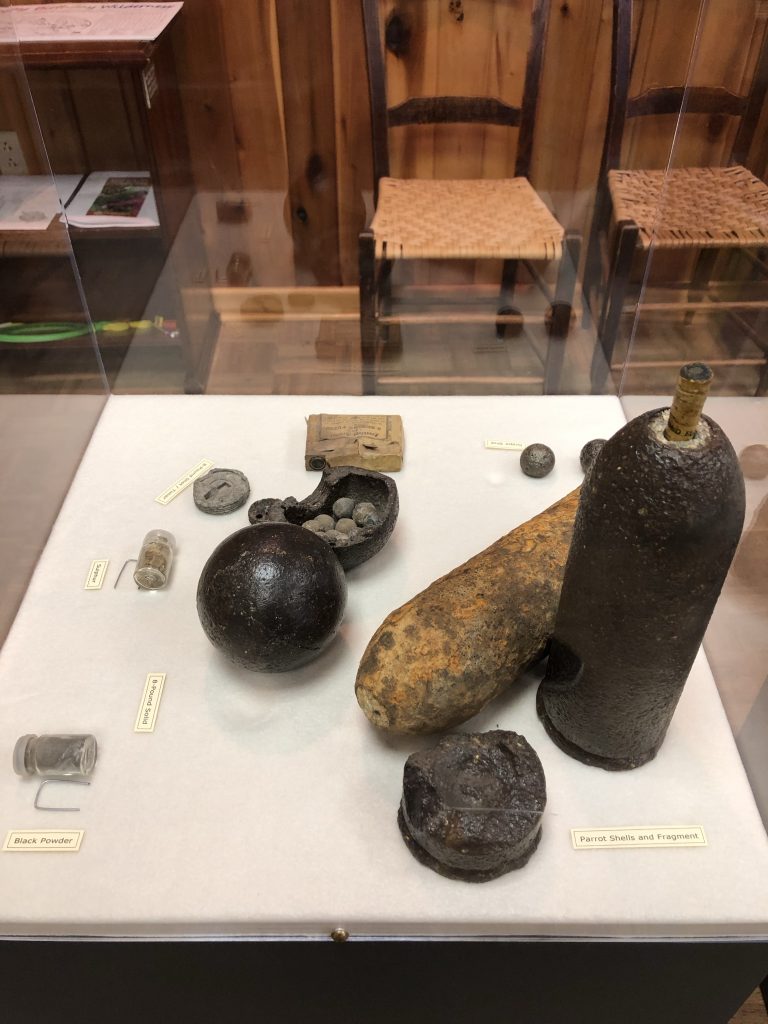
Continuing along US Route 250, and crossing over the east fork of the Greenbrier River, you can find the site of the Confederate Camp Bartow a short distance to the east. A nice wayside there discusses the failed Union “reconnaissance-in-force” that attempted to dislodge the Confederates and that we now recognize as the Battle of Greenbrier River.
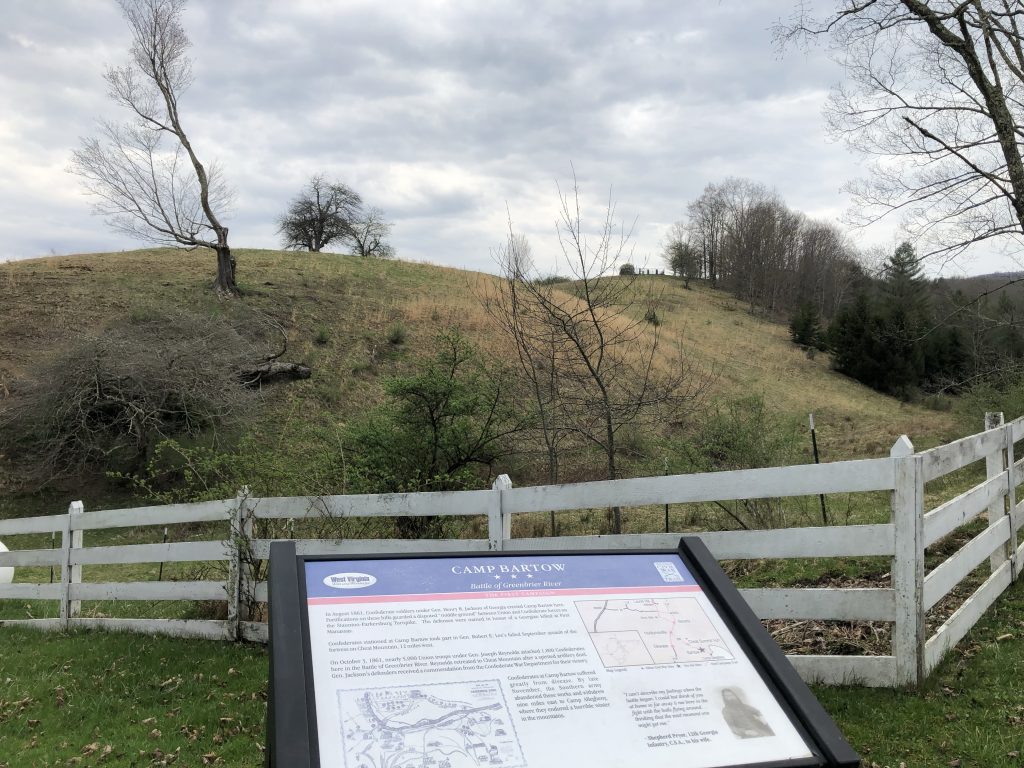
Battle of Camp Allegheny – Civil War Battlefield #88
One of the great pieces of information I got from the ranger at the Bartow Forest Service station was that the best approach to the site of the Battle of Camp Allegheny was from the east. A dirt road splits off from US Route 250 immediately before you hit the Virginia state line, and that would be the smoothest way for me to reach the top of the mountain. There is a small area to pull off right at the start of that road so that the couple of waysides and markers talking about Camp Allegheny can be viewed.
The dirt road up to the “Top of Allegheny” was rough. Probably the scariest road I’ve ever been on. It is a single lane, dirt road, twisting up the side of a mountain. It is full of massive potholes that you have to carefully avoid (especially when you’re in a 2009 Honda Civic with very low ground clearance), and absolutely nothing like guardrails. It was a bumpy and potentially dangerous ride, but I was not going to pass up the chance to visit this site!
At the top, I pulled into the small Forest Service parking area just as a slight drizzle started. I took some time to examine the wayside there and then fired up the video camera on my iPhone to capture my impressions.
The site of the historical fort is out in the field you see toward the end of the video. That is all private property today. Once again, this was an extremely peaceful and quiet place. And the fact that you have to take a single-lane dirt road to get there, and that there wasn’t a prayer that you’d get a cell signal (thanks to the NRQZ) really made it feel like you were stepping back into 1861. This one stop was definitely the emotional high point of the trip. I am SO glad I did it.
It became clear that there was no good way down the mountain to the west, so in order to head to my next stop, I’d have to retrace my steps back to Bartow.
Green Bank Observatory and Science Center – A Brief Interlude
At Bartow, I turned south, and drove along the Potomac Highlands Trail until I reached the town of Green Bank, WV.
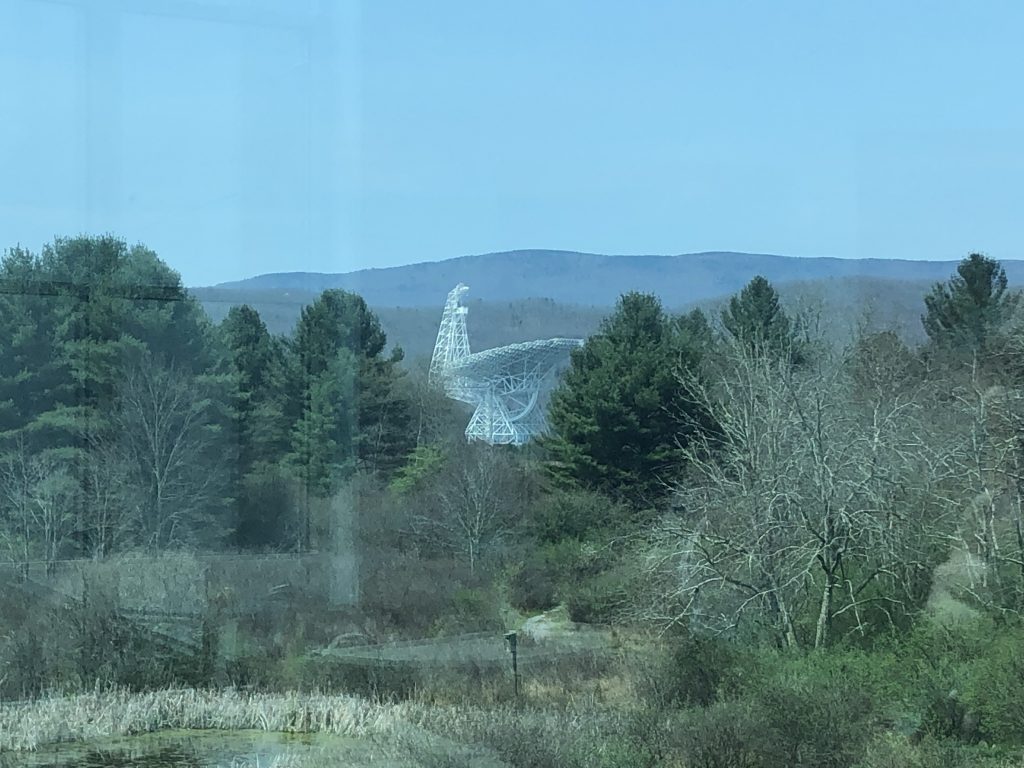
This very unique town is host to the Green Bank Observatory and Science Center. Here, massive radio telescopes listen for signals from the distant universe – something that is only possible inside the NRQZ. Radio transmissions are extremely restricted in town. Residents aren’t allowed to run wi-fi access points, nor use microwave ovens in their homes. The radio telescopes are situated relatively far from public roads, and only diesel-engine vehicles are allowed to take visitors close enough for tours as even the radio noise from a spark plug is enough to ruin their experiments.
I grabbed lunch at the Starlight Café within the museum – seemingly the only restaurant in town – and had a chance to check out the exhibits and pick up a few souvenirs for the boys. Since there are no radio transmissions allowed in the area, I also was able to catch a photo of a rare historical artifact.
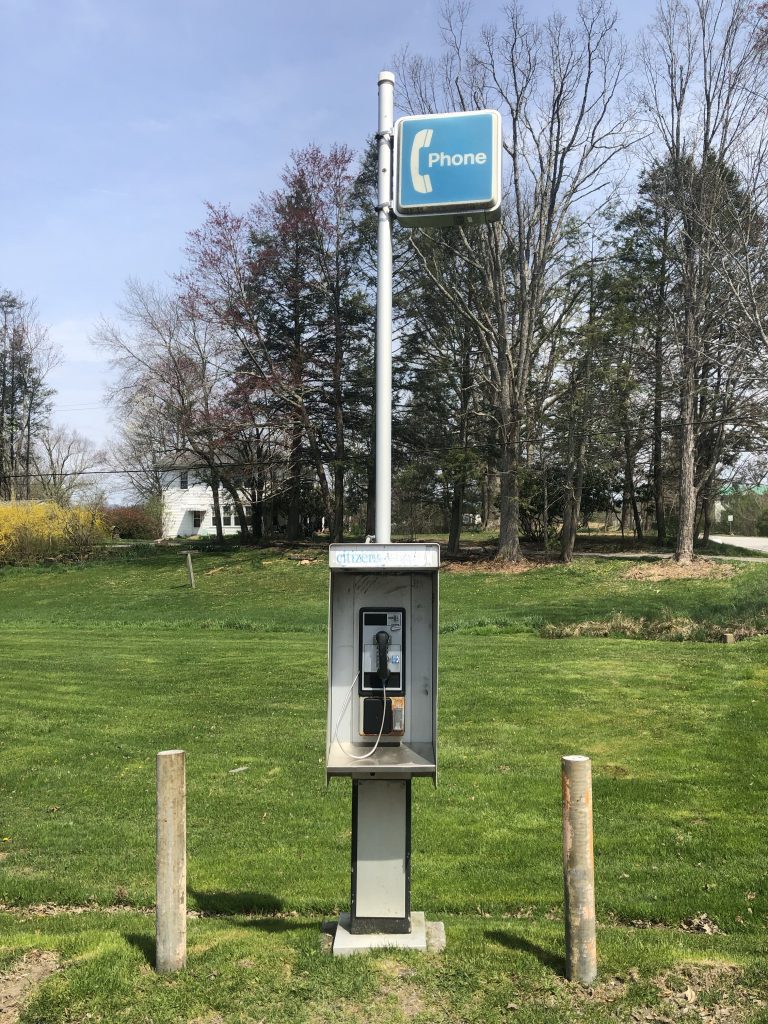
Battle of Droop Mountain – Civil War Battlefield #89
Heading farther to the south and west, I was eventually able to see signal bars on my iPhone again as I approached my next stop, the Battle of Droop Mountain. A roadside marker along the way confirmed that I was on the right track.
Now a West Virginia State Park, this battlefield has been very well-preserved and has several markers and even a few monuments. Near the parking lot, I had my first artillery sighting of the trip – although it was a replica 10-pounder Parrott Rifle.
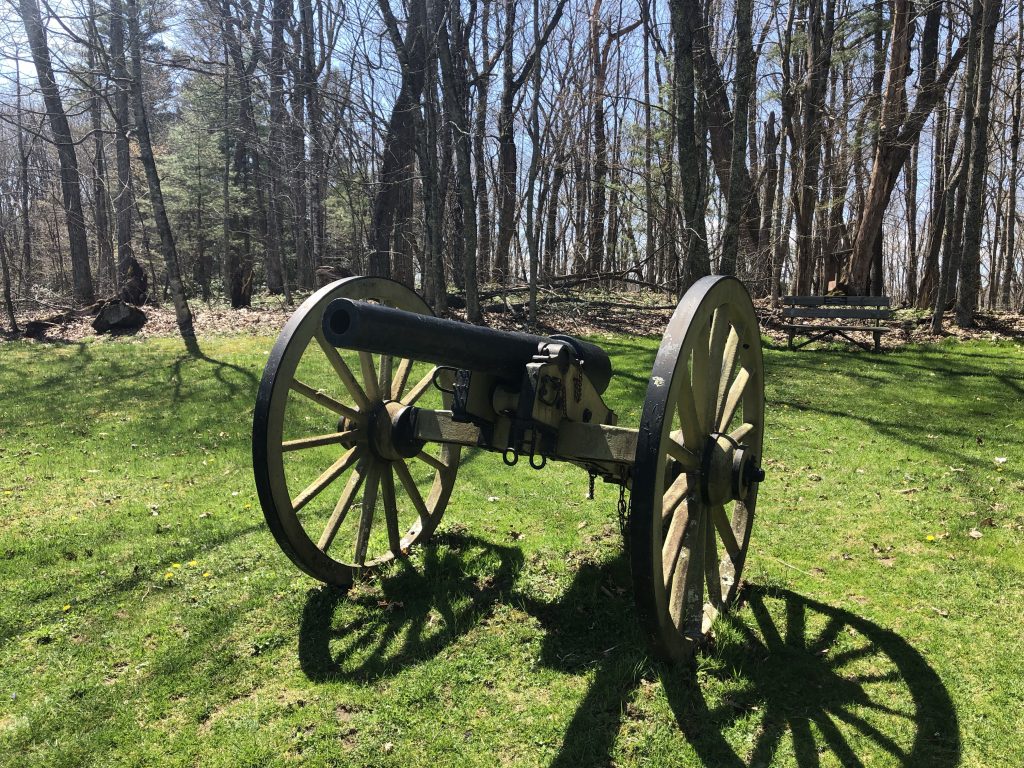
Many units have individual markers like this one to the 22nd Virginia Infantry that are placed along the main tour road. Col. George S. Patton, grandfather of the famous WWII general, commanded this particular regiment at Droop Mountain.
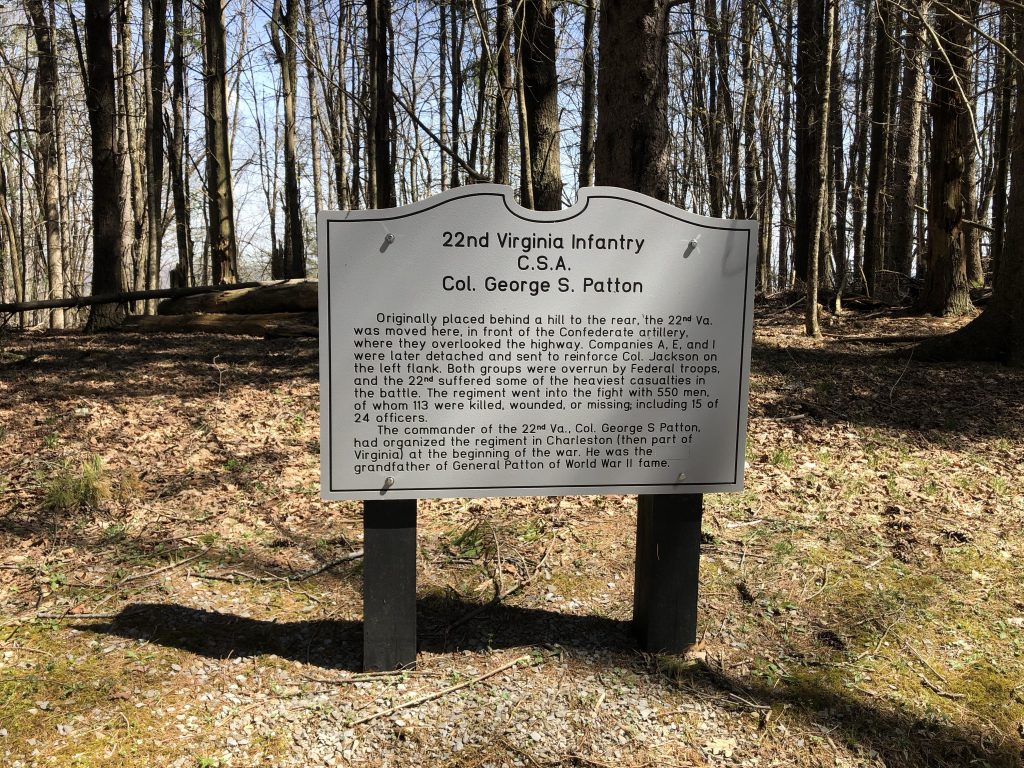
The true highlight of this field is the distinctive observation tower located on the far eastern slope of the mountain. The views up the valley toward the town of Hillsboro, WV are magnificent. Trust me when I say that the photos I took don’t do it justice.
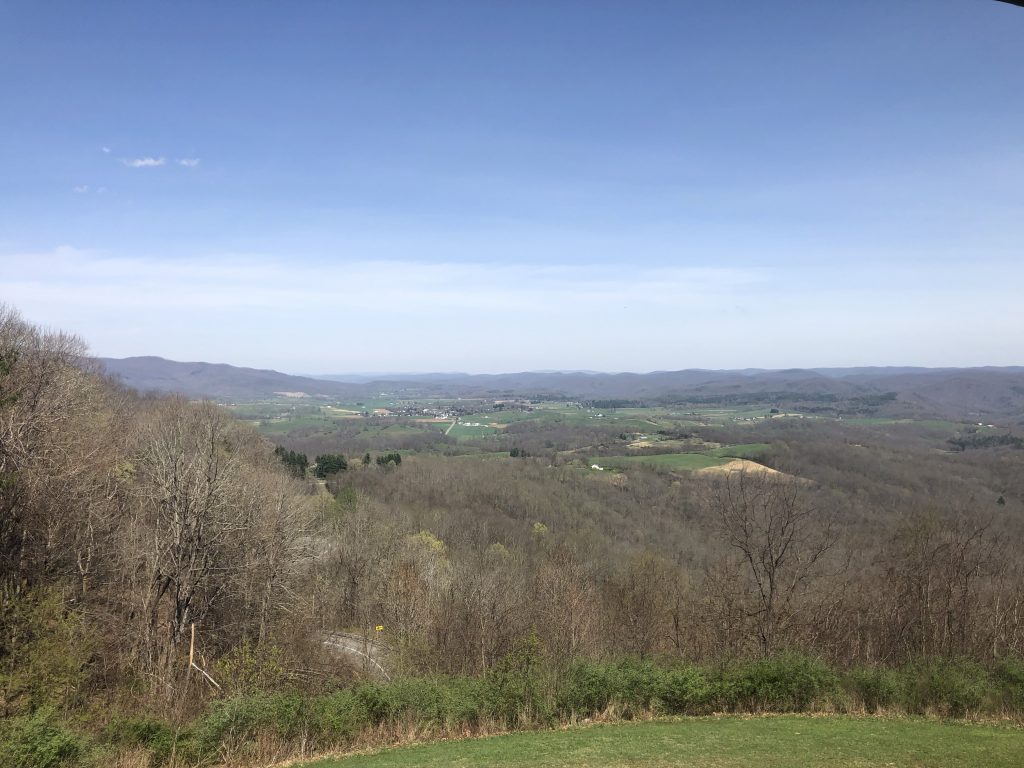
Battle of Carnifex Ferry – Civil War Battlefield #90
My next leg took me deeper into West Virginia and weaving through the mountains that were clearly coal country. I passed several old industrial sites, and small towns on my way to the West Virginia State Park that preserves the Battle of Carnifex Ferry.
Like Droop Mountain, the fact that this is a state park means that it is pretty well-preserved, and there are numerous markers to explain what took place here. I think my favorite aspect of this park was the numerous warnings – on their website, as well as on signs around the park – that you should stay on marked trails because of the high risk of unexploded ordnance STILL being in the ground here after more than 150 years.
One such trail leads along the side of the mountain to stunning views of the Gauley River valley below. Once again, the images you get from a camera just can’t capture the feeling of being there yourself.
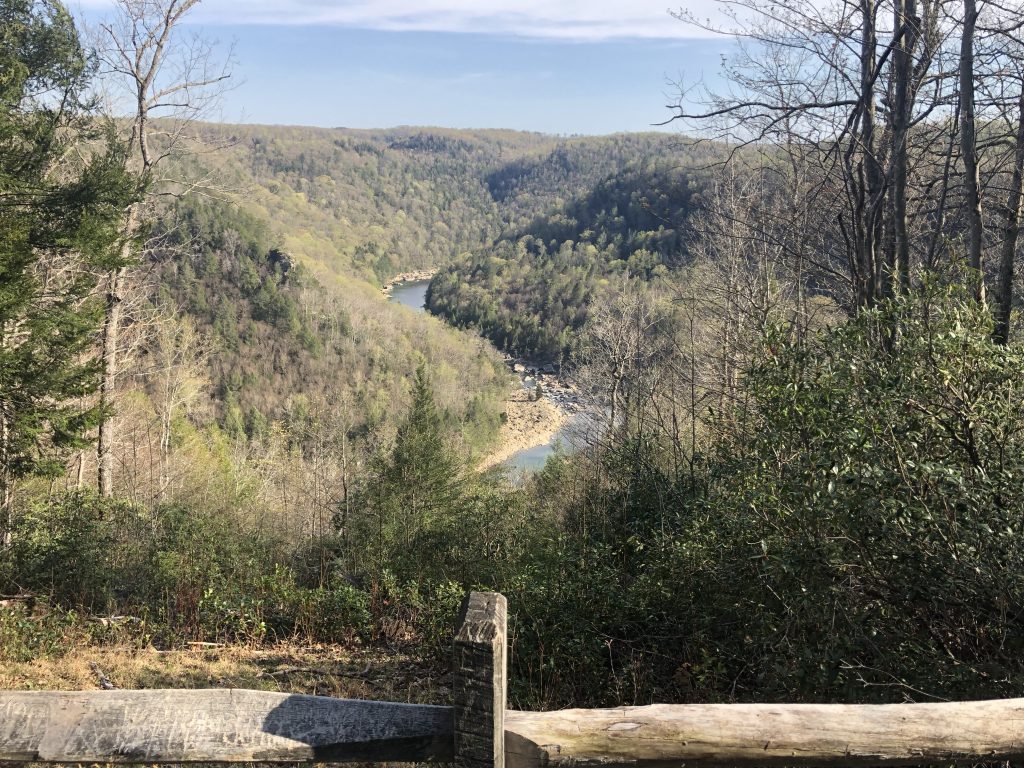
Battle of Kessler’s Cross Lanes – Civil War Battlefield #91
Just north of Carnifex Ferry is a much smaller engagement: the Battle of Kessler’s Cross Lanes. Today, this site is little more than an intersection. There are some markers near the local volunteer fire station, as well as a wayside at the local gas station that explain more about what happened here.

New River Gorge Bridge – Another Brief Interlude
I was done with battlefields for the day, but I still needed to make it to my hotel for the night, which was booked for Princeton, WV. I made my way to US Route 19 and headed south.
Along the way, I knew I would need to pass over the New River Gorge Bridge – one of the tallest and longest single-arch bridges in the world. Now, I am very acrophobic, but I’ve never really had a problem with bridges, so I wasn’t worried about having to drive over this thing, but I made a critical mistake: I pulled over at the NPS New River Gorge visitor’s center to get a view of this engineering marvel first.
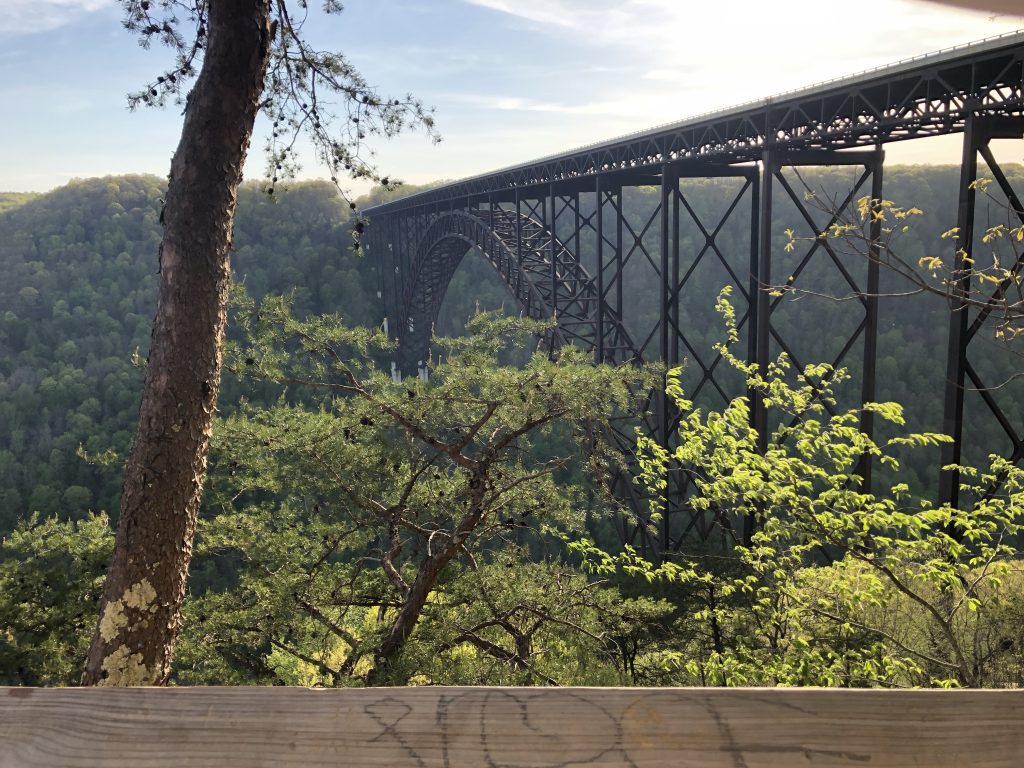
The bridge is on a scale that I can’t even describe. It spans the gorge 867 feet above the river – high enough to fit the Washington Monument and 2 Statues of Liberty stacked on top for good measure, underneath the arch, with 20 feet to spare. I was blown away by how massive it was. This would easily be the tallest structure I had ever been on. After I collected myself, I was able to white-knuckle it across, and I swear that I felt absolutely EVERY slight sway and bump my car made along the road deck.
Obviously, I survived. 🙂
Day 2
Got an early start from the Microtel Inn in Princeton, WV. The first order of business was to check out downtown Princeton, and then see how many other sites I could hit in Tennessee and Virginia.
Battle of Princeton Court House – Civil War Battlefield #92
I parked near the court house and explored a little bit. Sadly, I could only find one wayside marker that mentioned the Battle of Princeton Court House. It talks about some fighting happening near the court house itself. There is a military museum across the square, but it wasn’t open during my visit. It is very hard to get a sense of the fighting here, as the area appears to have been built up in the years since, and I suspect that much of the terrain has been altered.
With my visit to Princeton, I have now seen every official Civil War battlefield in West Virginia, so that’s a pretty cool milestone.
Battle of Cove Mountain – Civil War Battlefield #93
Heading south on Interstate 77, I crossed into Virginia, and before long I was in the outskirts of Wytheville, VA on my way to the site of the Battle of Cove Mountain.
The terrain here is very pretty. As the name suggests, the field sits in the valley of a horseshoe-shaped mountain formation – only opening up on the western edge. The valley is full of farms among the rolling hills, and is quite pretty to drive through.
Fighting seems to have happened down the valley near the open end, but that is mostly an educated guess on my part. The few markers I was able to find are short on details. The old brick church here became a temporary hospital, and is still used on special occasions by a local congregation in Wytheville.
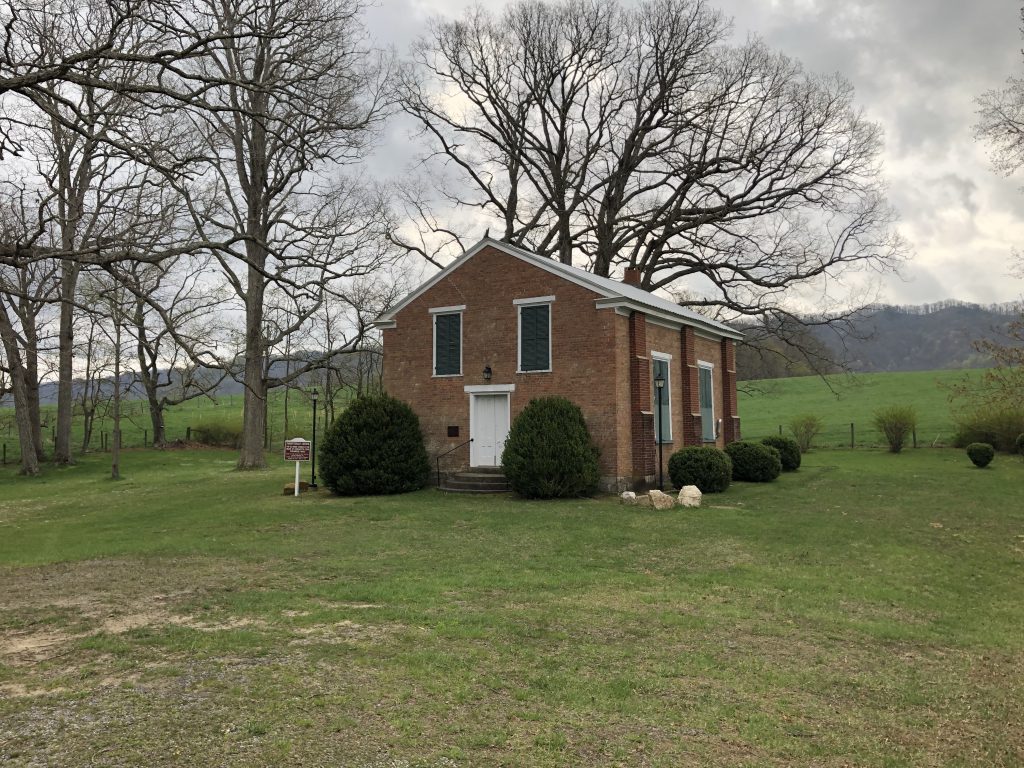
After a few moments of reflection at the church, I got back in the car and decided to go southwest. There was a threat of storms, and I decided to try to maximize my trip by going to the farthest battlefield I could and then working my way back home, hitting more sites along the way. I crossed into Tennessee, and was delighted to get WDVX back on my radio once again.
Battle of Fair Garden – Civil War Battlefield #94
Almost to Knoxville, I found that the Battle of Fair Garden is yet another engagement that is very hard to picture because of the changes to the terrain that have occurred over time. There is a very good wayside on the grounds of Walters State Community College, Sevierville, but I believe that the all the “landmark” buildings of this battlefield are gone.
Battle of Dandridge – Civil War Battlefield #95
There were a few incidents of fighting in Dandridge, and there are a few markers that at least make mention of them. The official Battle of Dandridge happened on January 17, 1863. The Bradford-Hynds House – used by both Union and Confederate officers as a headquarters at different points – still stands downtown. That downtown area sits in something of a bowl-like depression geographically, and my best guess is that the fighting happened up at the rim.
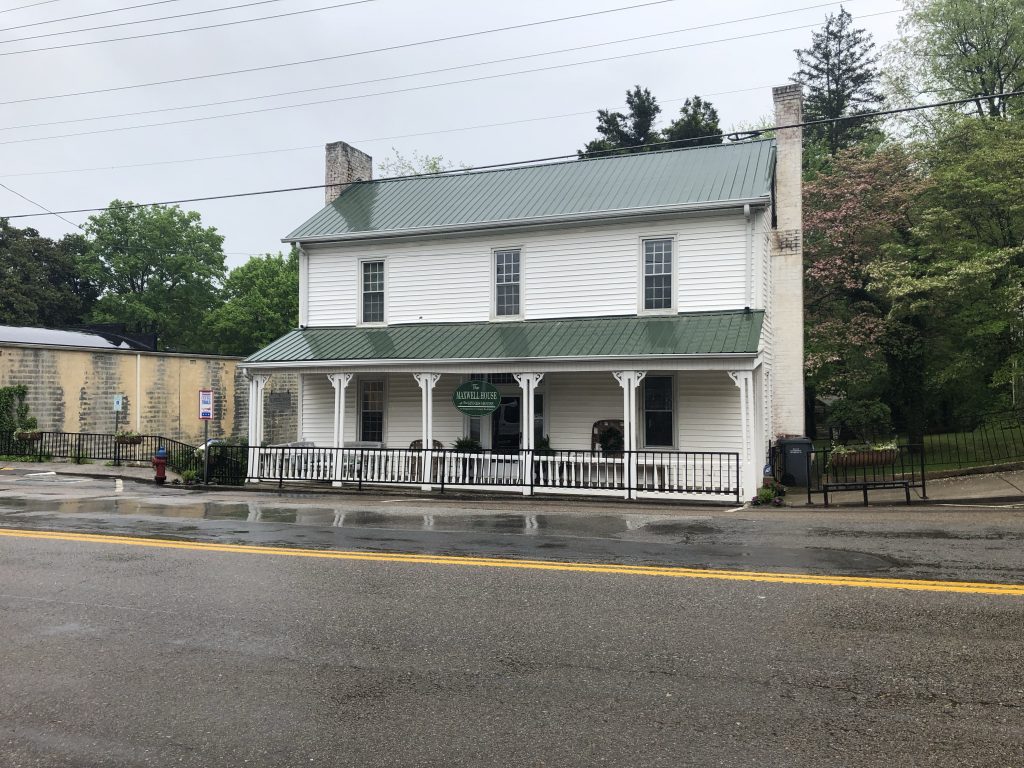
Battle of Mossy Creek – Civil War Battlefield #96
At the time that I visited, the bridge over Mossy Creek was out, so I had to take a bit of a circuitous route to reach the Battle of Mossy Creek. The field has been overtaken by a baseball diamond, an industrial park, and – appropriately – a National Guard facility that has a few historical markers and waysides near its entrance. Given all the construction, I have to imagine that the terrain isn’t what it was in the 19th century.
Battle of Bean’s Station – Civil War Battlefield #97
I had gotten a tip that while the field of the Battle of Bean’s Station no longer existed, you could get a good view of the area from an overlook on Clinch Mountain along US Route 25E. There is even a marker there that mentions the fighting. It was very overcast and rainy on the day that I visited, so I didn’t get the greatest experience myself. I have since learned that there may be other markers and waysides closer to the shoreline.
Unfortunately, the battlefield no longer exists because it is underwater now. When the TVA built the Cherokee Hydroelectric Dam, they flooded the area where the action took place.
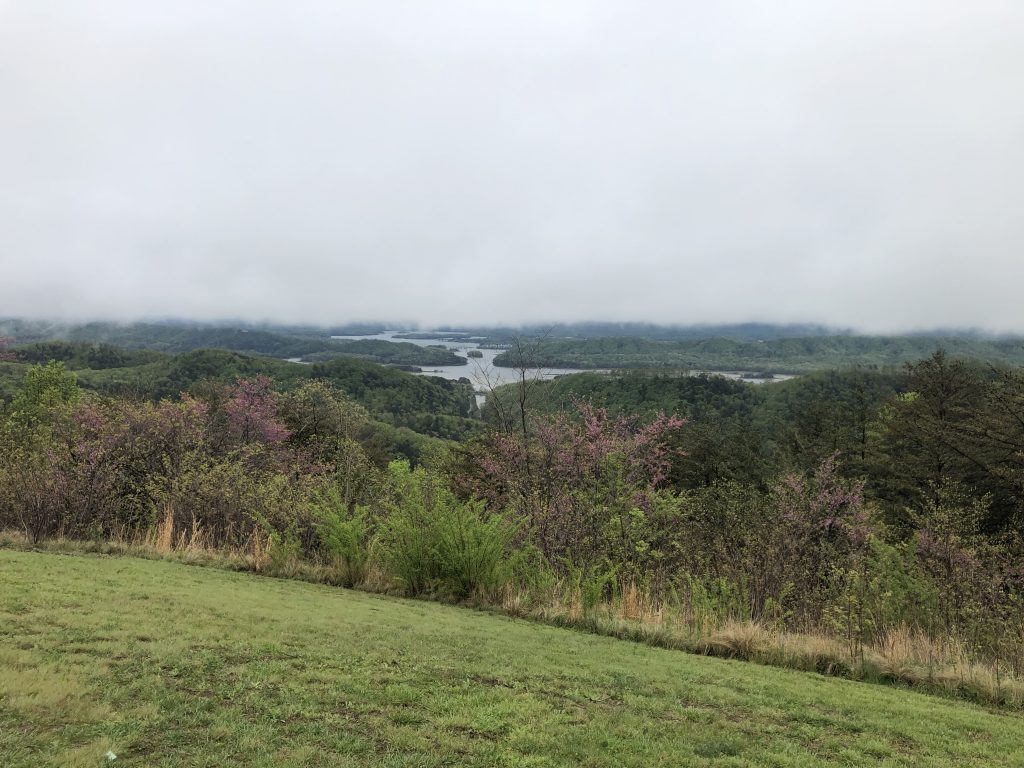
Battle of Bull’s Gap – Civil War Battlefield #98
Thanks to another tip, I was directed to the Bull’s Gap Railroad Museum as a source of information about the Battle of Bull’s Gap. It turned out to be great advice. I had a lovely conversation with Bill (who seems to run the museum) and his brother. They regaled me with tales of their Civil War ancestors and their actions in the area. History can have such an impact in places like this.
Bill was nice enough to direct me toward the gap, which seems to have been where the combat action was, but I couldn’t find a single marker anywhere in the area.
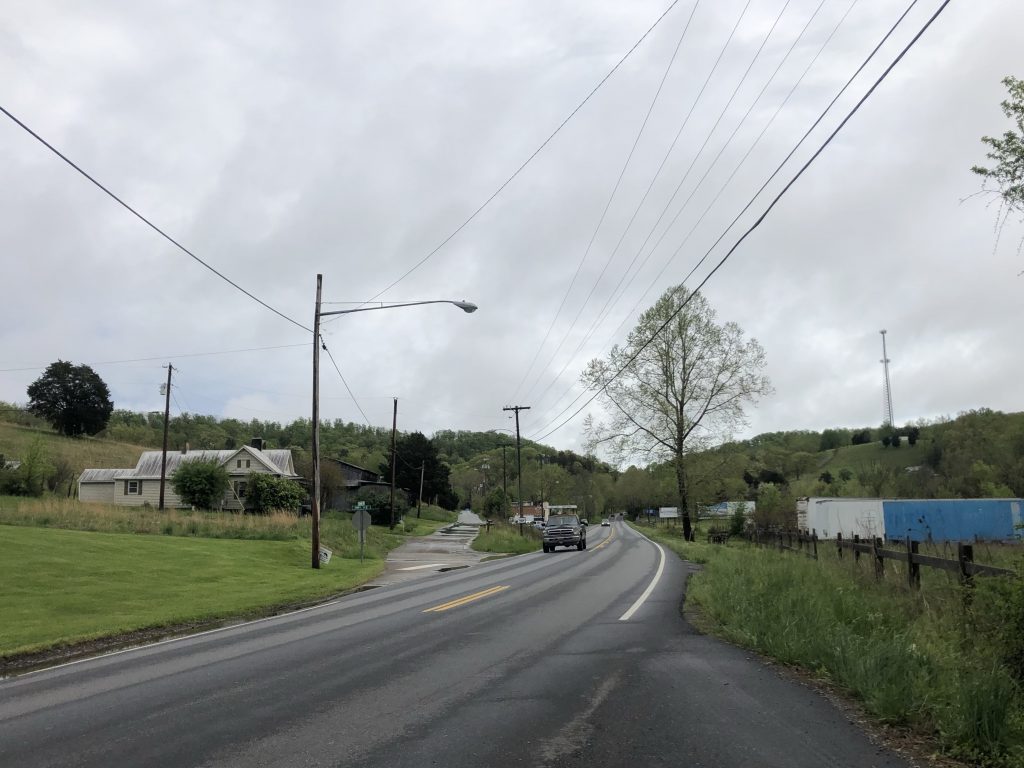
Battle of Blue Springs – Civil War Battlefield #99
Another place where I believe the terrain has changed, and there were a few different actions at different times in the area of the Battle of Blue Springs, so I couldn’t get a good sense of how things unfolded exactly on the ground. There is a wayside marker in the local Food Country parking lot, and another roadside one nearby.
Battle of Blountville – Civil War Battlefield #100
My 100th battlefield! What an incredible milestone in my journey!
There are many historical waysides, markers, and even a memorial describing some of the action along the main street in town. I was able to park my car and just walk along the street reading as I went. Blountville is clearly very proud of its history.
During my walk, I learned that part of the town – including the court house – burned due to artillery fire from the Battle of Blountville. One of the things that I didn’t expect to find was the original bell from the town court house, which the plaque identified as having been forged in my native Maryland.
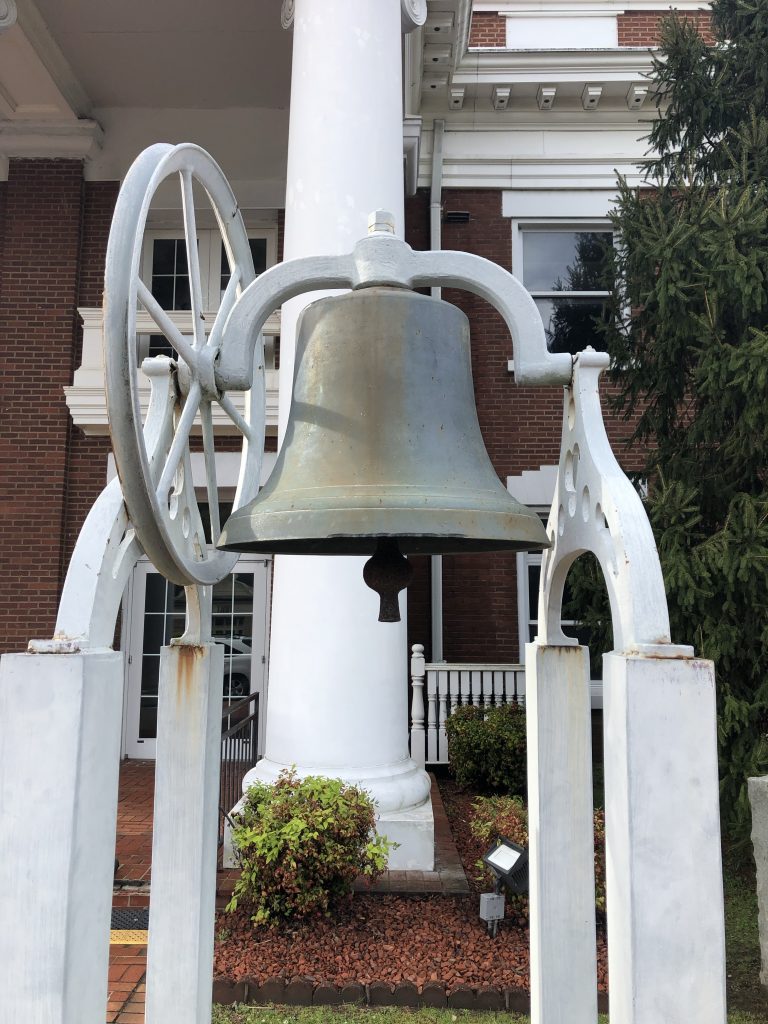
After I’d had enough exploring, I made my way back to the car and continued east on Interstate 81, crossing back into Virginia. I was well on my way home, but I hoped to hit just one more town before I ran out of daylight.
Second Battle of Saltville – Civil War Battlefield #101
The aptly-named Saltville, VA had a key role to play in the Civil War. This was the Confederacy’s main source of salt – especially toward the end of the war – and it was vital to keep those supplies coming as salt was used as a preservative for the food that was feeding the army. As much as the Confederates wanted to defend this place, the Union wanted to disrupt and destroy these operations. Two official battles were fought here, and because of the way I came into town, I passed by the site of the Second Battle of Saltville first.
Salt Park is along the road southwest of town, and has a very cool display of equipment that would have been used in the production of salt in the 19th century, and gives something of an idea what the salt works would have been like. In addition, they also host a couple of wayside markers that discuss the battle. The hills where the Confederates had their defensive positions set up are visible from here, and they look quite imposing.
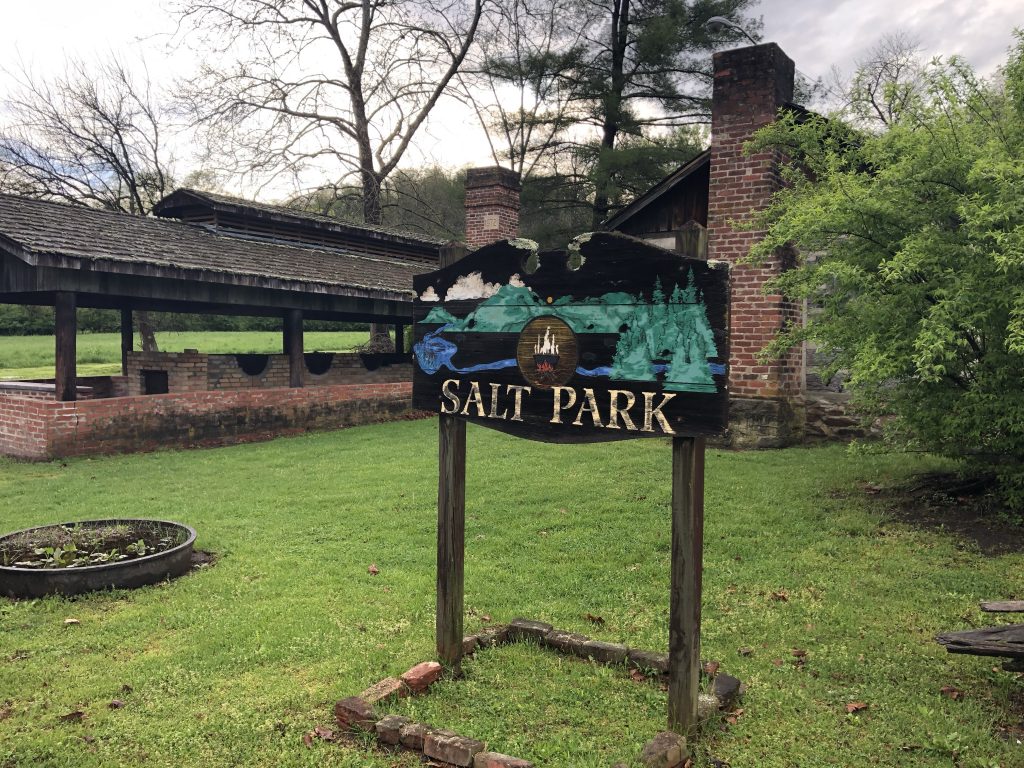
First Battle of Saltville – Civil War Battlefield #102
A short drive through town to the east took me to the site of the First Battle of Saltville.
The best place to experience this field from is a small park on the hill overlooking where Cedar Creek runs into the Holston River. The Confederate defenses were posted on this hill. A very good wayside marker tells the story here, but this is also one of those fields where you can almost see what happened as soon as you look out from this defensive position. The Union forces – mostly consisting of United States Colored Cavalry Troops – were slaughtered by the vengeful Confederate defenders.



